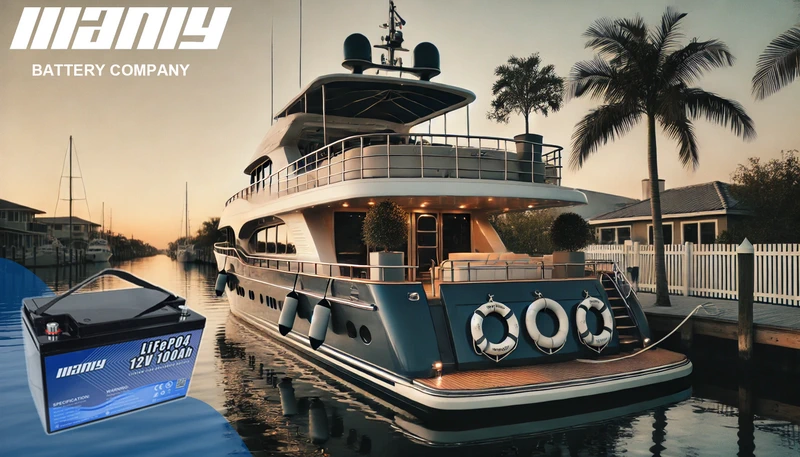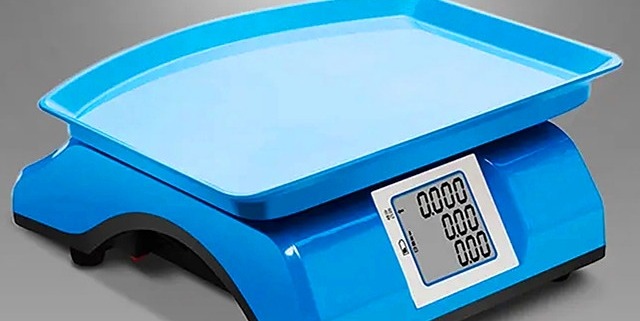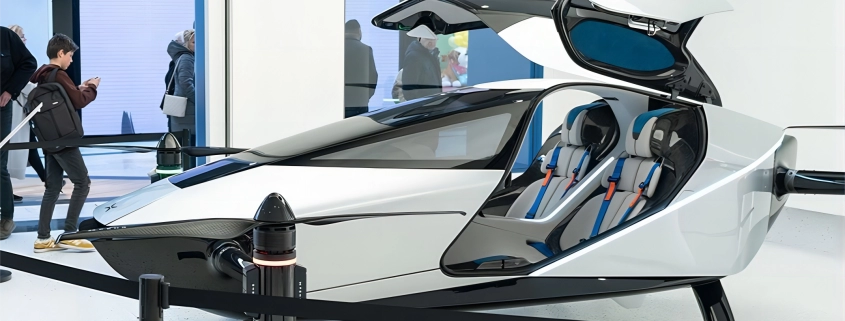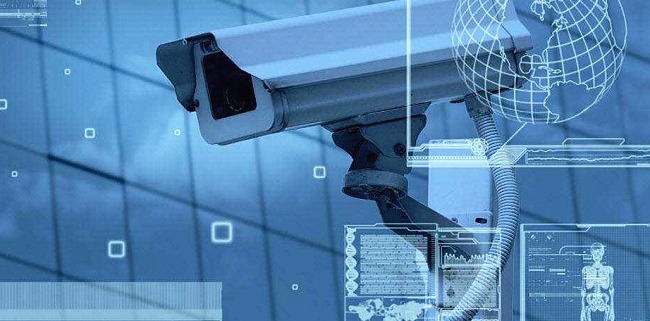What Type of Battery is a Marine Battery? A Detailed Breakdown
Table of Contents
- What Type of Battery is a Marine Battery? A Detailed Breakdown
- What is a Marine Battery?
- Different Types of Marine Batteries and Their Features
- The Best Choice: LiFePO4 Batteries for Marine Use
- Why LiFePO4 Batteries Are the Best Marine Batteries?
- Conclusion
- FAQ
- Hot Search
- Some Notes on Electronic Scales
- China’s Skyward Surge: A Leader in the Flying Car Revolution
- The development trend of security system
Maintaining a consistent and dependable boating experience depends on choosing the right marine battery. Whether you use a trolling motor, start your engine, or run electronics, the appropriate battery type will make all the difference. The several choices for batteries make many sailors find it difficult to choose the right one.
This article will break apart lead-acid, AGM, gel, and LiFePO4 batteries as well as other types of marine batteries. You will learn every type in great depth, including its benefits, drawbacks, and optimal uses. By the conclusion, you will understand the reason LiFePO4 batteries are the best fit for marine applications.
What is a Marine Battery?
Designed especially to withstand adverse sea conditions, a marine battery is Unlike automobile batteries, which only provide short bursts of electricity to start an engine, marine batteries must deliver constant power for lengthy durations while tolerating vibrations, dampness, and temperature variations.
- Usually driven by its intended use, marine batteries are categorized:
- The starting battery runs the boat motor. It gives a brief, sharp boost but lacks long-term vitality.
- Deep-cycle batteries run constantly for lights, fish finders, and trolling motors among other equipment.
- A dual-purpose battery sometimes performs worse than dedicated beginning and deep cycle batteries, even if it aims to combine two uses.
These classification indicate the use of a marine battery, although the most important factor influencing battery performance is battery chemistry. Chemistry of a battery determines its general performance, longevity, efficiency, and maintenance requirements.
Different Types of Marine Batteries and Their Features
The several kinds of marine batteries are listed below, together with their characteristics:
Lead-Acid Marine Batteries
Lead-acid batteries have been used in marine conditions as they have been rather competitively priced and widely available for decades. These batteries chemically react with lead plates and sulphuric acid to generate power.
Flooded Lead-Acid (FLA) Batteries
Flooded lead-acid batteries are the most classic form. They demand consistent maintenance, including topped off distilled water. They are heavy, require ventilation, have a shorter lifetime than other battery types even if they are economically priced.
Sealed Lead-Acid Batteries
Lead-acid batteries sealed eliminate maintenance needs and are spill-proof. Two most widely used variants that improve performance over typical flooded lead-acid batteries are AGM (absorbed glass mat) batteries and gel batteries.
Advantages of Lead-Acid Marine Batteries
Lead-acid batteries are reasonably cheap and rather numerous. Their great starting current makes them worth using for engine cranking.
Disadvantages of Lead-Acid Marine Batteries
Lead-acid batteries need regular maintenance, weigh a lot, and charge slowly. Usually running for two to four years, their lifetime is short; they break down upon discharge below 50% capacity.
AGM (Absorbed Glass Mat) Marine Batteries
AGM batteries are spill-proof and maintenance-free by absorbing the electrolyte using fiberglass mats, therefore improving traditional lead-acid designs.
How do AGM Batteries Work?
By immobilising the electrolyte inside the glass mat, AGM batteries reduce the possibility of leaking and hence maximise power efficiency. Since this structure lets for better resistance to vibrations and faster charging periods, AGM batteries are a more durable replacement for flooded lead-acid batteries.
Advantages of AGM Marine Batteries
Zero maintenance and faster charging than other lead-acid models describe AGM batteries. Their lifetime is between three and six years, and they have more resistance to deep discharges.
Disadvantages of AGM Marine Batteries
AGM batteries remain heavier than lithium alternatives even with their superior performance. On a tight budget, they also appeal less to boaters since they cost more than flooded lead-acid batteries.
Gel Marine Batteries
Gel batteries use liquid electrolytes from a silica-based gel. Less leaks and greater deep discharge performance are made possible by this chemical composition.
How do Gel Batteries Work?
The gel-based electrolyte lowers chemical reactions, therefore reducing the possibility of overcharging or deep discharge. Applications needing constant, long-term power will find ideal use for these batteries.
Advantages of Gel Marine Batteries
Gel batteries resist high temperatures, maintain a longer lifetime than flooded lead-acid batteries, and require no maintenance.
Disadvantages of Gel Marine Batteries
The slow charging rate of gel batteries is its biggest drawback. Furthermore expensive than AGM and flooded lead-acid batteries are they are. Less forgiving than other battery kinds, overcharging can damage a battery permanently.
The Best Choice: LiFePO4 Batteries for Marine Use
The most intelligent and powerful marine batteries are LiFePO4 (Lithium Iron Phosphate). Unlike lead-acid batteries, which rely on chemical interactions between lead and acid, they offer constant and dependable power by means of lithium-ion technology.
Why LiFePO4 Batteries are Superior?
Among their most important benefits are LiFePO4 batteries’ extended lifespan. Lead-acid batteries run two to six years; LiFePO4 batteries can run ten years or more. Since they weigh up to 70% less than lead-acid batteries and are more easily handled, they also greatly improve boat performance.
Charging time offers still another major advantage. Five times faster charging of LiFePO4 batteries than with lead-acid batteries Unlike lead-acid batteries, which have to be kept above 50% charge, they also enable total discharges free from battery damage.
Are There Any Drawbacks to LiFePO4 Batteries?
The sole negative of LiFePO4 batteries is their starting cost. For seasoned sailors, however, they are the most affordable choice because of their long lifetime, fast charge times, and low maintenance needs.
Why LiFePO4 Batteries Are the Best Marine Batteries?
LiFePO4 batteries have long-term benefits above all other battery models, even if their initial expense makes many sailors unwilling to switch. Boats carrying LiFePO4 batteries had 30% longer running lifetime on electronic systems and trolling motors, according a study by marine engineers.
Savings in weight also improve performance. LiFePO4 technology lets a boat greatly reduce the weight of its battery, therefore enhancing fuel economy and general maneuverability. Boaters looking for dependability, fast charging, and long-lasting performance would best invest in LiFePO4 batteries.
Conclusion
The perfect sailing voyage depends on selecting the right marine battery. Though lead-acid, AGM, and gel batteries are still somewhat popular, none give the efficiency, lifetime, and long-term savings LiFePO4 batteries offer.
LiFePO4 batteries from MANLY Battery provide the finest answer if you want a dependable and high-performance marine battery. Their innovative lithium technology guarantees exceptional energy economy, therefore assuring that your boat keeps running without the trouble of regular replacements.
For premium-quality marine batteries, visit MANLY Battery today and experience the next generation of marine power solutions.
FAQ
1. Is a deep cycle battery the same as a marine battery?
Let’s clarify: a deep cycle battery and a marine battery aren’t the same, although they have similarities. Here’s why:
A deep cycle battery provides a steady power flow over an extended period. It’s designed for applications that need consistent energy, like golf carts, RVs, or renewable energy systems. These batteries are built to handle repeated discharges and recharges without losing performance.
On the other hand, a marine battery is specifically made for boats. However, marine batteries come in two types: starting and deep cycle. A starting battery delivers a quick surge of power to start the engine, while a deep cycle marine battery powers your boat’s electronics and other devices.
So, while some marine batteries are deep cycle, not all deep cycle batteries work as marine batteries. If you’re choosing a battery for your boat, ensure it’s designed for marine use to get the most reliable power.
2. What are the three types of marine batteries?
Marine batteries come in three main types, each serving a different purpose. Understanding their roles helps you pick the right one for your boat:
- Starting Batteries: Starting batteries provide a quick burst of power to start your engine. They’re all about delivering a high-energy jolt for a short time. These batteries are not designed to power other devices, so they focus only on getting your engine running.
- Deep Cycle Batteries: Need power for your boat’s electronics, trolling motor, or other accessories? Deep cycle batteries are your answer. They deliver steady, long-lasting energy and can discharge and recharge multiple times without losing capacity. Perfect for extended trips or when you’re off the grid!
- Dual Purpose Batteries: As the name suggests, dual purpose batteries combine the functions of both starting and deep cycle batteries. They give you enough power to start your engine and supply energy to your accessories. They offer versatility but may not provide as much power as a dedicated starting or deep cycle battery.
Hot Search
Marine Lithium Battery Battery Manufacturer
Hello
(1) The electronic scale should be used in a ventilated and dry environment. The temperature should not be too high or too low. The service life is determined by the characteristics of the sensor, the characteristics of the electronic components and the characteristics of the plastic shell.
(2) The electronic scale can only be used after the power switch is inserted for 2~3 minutes.
(3) The shell and buttons of the electronic scale should be kept clean. Because any oil pollution will affect the normal service life.
(4) When using the electronic scale, keep the four corners of the scale body stable and as level as possible. In this way, it can weigh accurately and respond quickly. Because the sensor is in stable vertical force, the output signal is the most accurate.
(5) When the electronic scale is weighing, do not place objects that exceed the rated mass on the weighing pan. Because this will shorten the service life of the sensor, let alone slam the sensor.
(6) The sensor connection line of the electronic scale shall not be lengthened by itself, so as not to affect the accuracy of the scale.
1. HD application
In recent years, “HD whirlwind” has become a popular word in the entire security system, and the concept of HD is also deeply rooted in the hearts of the people. With the high-definition concept proposed by relevant monitoring manufacturers, this is not only a single security product, but a complete set of novel and complete solutions to be applied in the security system. High-definition technology has no related technical problems, but the manufacturers that can provide this complete set of solutions are still relatively limited. In the monitoring industry, this overall solution mainly promotes related high-definition solutions, such as safe cities and intelligent transportation.
For the high-definition industry, the price of lenses is often relatively high, and the compatibility of multiple manufacturers often has certain problems, so there are certain problems in the overall system requirements of users. Therefore, there are certain deficiencies in the high-definition security system in practical applications. . However, there are also many successful application cases of high-definition monitoring systems in the market, especially for some special industries. This is the local use of high-definition cameras in limited high-end fields. Although the publicity of high-definition security systems is relatively hot, there is still a problem of insufficient market share. However, with the advancement of technology, the increase of investment in the high-definition market by various manufacturers, and the continuous popularization of relevant standards and norms, we believe that more and more social enterprises and institutions will adopt high-definition cameras, and the high-definition industry will develop by leaps and bounds development of. On the one hand, with the increase in the demand for security systems, people’s security awareness continues to increase, and the demand for high-end security systems in the civilian market will also continue to increase. Therefore, considerable HD demand will appear in the field of civilian monitoring.
2. Internet of Things
For a wide range of Internet of Things, its application in the security industry can be said to be like a duck to water. It can be applied to the Internet of Things in various security fields, such as public safety, environmental protection, intelligent transportation, elderly care, intelligent fire protection, industrial testing and so on. This also shows that one of the important fields of IoT applications is the security field, and the pace of IoT entering the security field is moving forward rapidly.
(1) The Internet of Things and Intelligent Transportation
The Internet of Things plays a significant role in the “new generation of intelligent transportation”. With the rapid development of 3G and logistics sensing technology, wireless sensors combine with relevant embedded technologies, and integrate short-range wireless communication technology and microelectronic sensor technology. play an important role in data collection. For the intelligent transportation system, the vehicle speed, distance and other information in a fixed area are collected regularly through the non-contact geomagnetic sensor. For the terminal node in the system, when the vehicle enters the monitoring area of the relevant sensor, important information such as the driving speed of the relevant vehicle can be collected by the magnetic sensor, and the relevant information can be transmitted to the next awakened node at the same time. In this way, after the next node collects the relevant information of the vehicle, the average speed of the vehicle and other important information can be estimated. In this way, the information of multiple terminal nodes can be aggregated to the gateway node. Under the processing of data fusion, the information of the road and vehicle flow can be obtained, which can effectively help the traffic signal control at the intersection. In addition, important information such as road surface status, vehicle exhaust pollution, and visibility can also be obtained through different types of sensors installed on terminal nodes, such as humidity, gas detection, and illuminance.
(2) Internet of Things and Smart Home
With the help of the Internet of Things, automated homes can help building owners save time and provide a more energy-efficient and convenient lifestyle for the entire family. The so-called smart home is the use of advanced computer network technology, integrated wiring control technology, etc., and the use of automatic control to organically combine the related systems of home life to provide a convenient life for the owner. For example, the curtains in the home will be closed at a fixed time every night. Through the control panel by the bed, the lights or other electrical appliances in the room that need to be turned off can be automatically controlled before falling asleep, and the security system should be automatically set to the alert state. When you are on your way home, you can automatically control the air conditioner or water heater through a text message, and automatically allow the rice cooker to cook and prepare for you.
(3) Internet of things and security protection
The Internet of Things is more widely used in building security. The Internet of Things security technology can be used on the new security window. This new security window is basically invisible at a distance of 15 meters. This is the difference from the traditional security window. When you get closer, you can find a thin net covering the window. Basically composed of 5 cm thin steel wires, these sensing lines are connected to the monitoring system of the community. In this way, the steel wire will directly alarm the security system after being interrupted or subjected to a strong impact. In addition, this new type of anti-theft window can also improve the escape ability of residents from the perspective of fire protection, and it is easier to obtain rescue.
In addition, for the intelligent residential security system, using the existing network interconnection technology, coupled with advanced intelligent image analysis technology, sensor technology, etc., can carry out important work in access control and community unit video photography, which can meet the needs of access control management and The docking of the public security management platform. Here is an example of a fingerprint lock application for a brief description. Among them, among the front-end identification technologies of radio frequency access control, which account for more than 90%, “biometric identification” is more and more widely used in some key places. Among them, “fingerprint” identification accounts for more than half of the biometric identification methods. On the one hand, the high-tech electronic smart lock does not affect the appearance, on the other hand, it is more conducive to meet the requirements of fire prevention and theft. The circuit and the mechanism are the two parts of the fingerprint lock. It has fingerprint collection and recognition, and is functionally verified through the electronic module. At the same time, it cooperates with the high-performance security features of the high-precision mechanical lock cylinder. Password unlocking is also often a feature of fingerprint locks, and the key unlocking function is retained, which can handle individual cases where the electronic function fails.
3. Civility
At present, civil security has developed rapidly in the entire security industry, and the market is huge. Related to the civil security market mainly includes video surveillance, smart access control, smart home and anti-theft alarm and so on. The areas involved mainly include community security, entertainment monitoring, network monitoring of small chain stores, network monitoring of small and medium-sized shops (retail, convenience stores, etc.), as well as network video control of personal homes, etc. With the continuous improvement of people’s living standards and the gradual strengthening of placement awareness, the application scale of the civilian market of security products is getting larger and larger.
The fields of anti-theft alarm and building intercom are the current scope of application in the field of civil security. This simple, convenient and low-cost future anti-theft alarm device should have greater product functions and functions. The use of intelligent security systems is not only a single product, but should be combined with smart home, security care and other aspects. be the solution for the entire system. but. In the next few years, the market position of civil security systems is bound to rise further.







